
The number of styles and trends is huge, if not infinite. The key feature by which works can be grouped by style are the unified principles of artistic thinking. The change of some ways of artistic thinking by others (alternation of types of compositions, methods of spatial constructions, features of color) is not accidental. Our perception of art is also historically variable.
Building a style system in a hierarchical order, we will adhere to the Eurocentric tradition. The largest in the history of art is the concept of an era. Each epoch is characterized by a certain “picture of the world”, which consists of philosophical, religious, political ideas, scientific ideas, psychological characteristics of world perception, ethical and moral norms, aesthetic criteria of life, according to which they distinguish one era from another. Such are the Primitive Epoch, the Epoch of the Ancient World, Antiquity, the Middle Ages, the Renaissance, the New Age.
Styles in art have no clear boundaries, they smoothly transform one into the other and are in continuous development, mixing and opposition. Within the framework of one historical artistic style, a new one is always born, and that, in turn, passes into the next. Many styles coexist at the same time and therefore there is no “pure style” at all.
In the same historical epoch several styles can coexist. For example, Classicism, Academism and Baroque in the XVII century, Rococo and Neoclassicism - in the XVIII, Romanticism and Academism - in the XIX. Styles such as classicism and baroque are called big styles because they apply to all types of art: architecture, painting, decorative and applied arts, literature, music.
It should be distinguished: artistic styles, trends, trends, schools and features of individual styles of individual masters. Within the same style there can be several artistic trends. The artistic direction consists of both the typical for this era of signs, and from the peculiar ways of artistic thinking. Modern style, for example, includes a number of areas of the turn of the century: post-impressionism, symbolism, fauvism, etc. On the other hand, the concept of symbolism as an artistic direction is well developed in literature, while in painting it is very blurry and unites artists who are so different stylistically that it is often interpreted only as a unifying worldview.
Below are the definitions of epochs, styles and trends, which in one way or another were reflected in modern visual and decorative-applied art.
 | Gothic - art style, formed in the countries of Western and Central Europe in the XII-XV centuries. It was the result of the centuries-old evolution of medieval art, its highest stage and at the same time the first in the history of European, international art style. He embraced all types of art - architecture, sculpture, painting, stained glass, book design, decorative and applied art. The basis of the Gothic style was architecture, which is characterized by high-pointed lancet arches, multi-colored stained-glass windows, and visual dematerialization of the form. Elements of Gothic art can often be found in modern interior design, in particular, in wall paintings, less often in easel painting. Since the end of the last century, there is a Gothic subculture, clearly manifested in music, poetry, clothing design. |
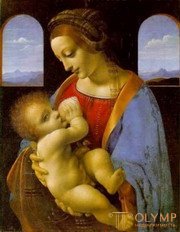 | Revival (Renaissance) - (French Renaissance, Italian. Rinascimento) Epoch in the cultural and ideological development of a number of countries in Western and Central Europe, as well as some countries in Eastern Europe. The main distinctive features of the Renaissance culture: a secular character, a humanistic world view, an appeal to the ancient cultural heritage, a kind of “revival” of it (hence the name). The culture of the Renaissance has specific features of the transitional era from the Middle Ages to the new time, in which the old and the new, intertwining, form a peculiar, qualitatively new alloy. The question of the chronological borders of the Renaissance (in Italy - 14-16 centuries, in other countries - 15-16 centuries), its territorial distribution and national characteristics is difficult. Elements of this style in modern art are often used in wall paintings, less often in easel painting. |
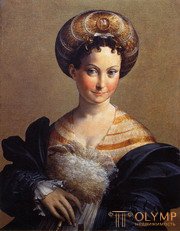 | Mannerism - (from the Italian maniera - reception, manner) flow in the European art of the XVI century. The representatives of Mannerism moved away from the Renaissance harmonic perception of the world, the humanistic concept of man as a perfect creation of nature. Acute perception of life was combined with a programmatic desire not to follow nature, but to express the subjective “inner idea” of the artistic image born in the artist's soul. Most clearly manifested in Italy. For the Italian mannerism of the 1520s (Pontormo, Parmigianino, Giulio Romano) are characterized by dramatic sharpness of images, tragedy of world perception, complexity and exaggerated expression of postures and motives of movement, elongation of proportions of figures, coloristic and light and shade dissonances. Recently, it has been used by art historians to designate phenomena in modern art related to the transformation of historical styles. |
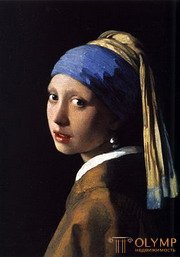 | Baroque - historical artistic style, which was spread initially in Italy in the middle. XVI-XVII centuries, and then in France, Spain, Flanders and Germany XVII-XVIII centuries. More broadly, this term is used to define the ever-changing trends of restless, romantic attitudes, thinking in expressive, dynamic forms. Finally, in every time, in almost every historical artistic style, you can find your “baroque period” as the stage of the highest creative rise, stress of emotions, explosive forms. |
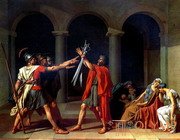 | Classicism - artistic style in Western European art XVII - early. XIX century and in the Russian XVIII - early. XIX, referring to the ancient heritage as an ideal to follow. It manifested itself in architecture, sculpture, painting, arts and crafts. Classical artists considered antiquity the highest achievement and made it their own benchmark in art, which they tried to emulate. Over time, it was reborn as an academic. |
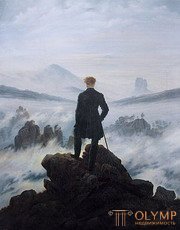 | Romanticism is a trend in European and Russian art of the 1820s and 1830s, which replaced classicism. Romantics brought individuality to the forefront, contrasting the “imperfect” reality with the ideal beauty of the classicists. Artists were attracted to bright, rare, extraordinary phenomena, as well as images of fantastic nature. In the art of romanticism, an acute individual perception and experience play a large role. Romanticism freed art from abstract classic dogmas and turned it to national history and images of folklore. |
 | Sentimentalism - (from the Latin. Sentiment - feeling) - the direction of Western art of the second half of XVIII., Expressing disappointment in the "civilization", based on the ideals of "reason" (ideology of the Enlightenment). C. proclaims the feeling, solitary thinking, the simplicity of the rural life of the “little man”. The ideologist S. is considered to be J.-J. Rousseau. |
 | Realism is a direction in art, striving to display with the greatest truth and authenticity both the external form and the essence of phenomena and things. As a creative method combines individual and typical features when creating an image. The longest trend in life, developing from the primitive era to the present day. |
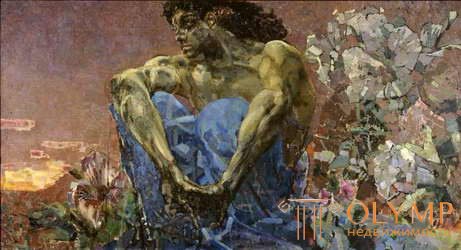 | Symbolism is the direction in the European artistic culture of the late XIX-early XX centuries. Aroused as a reaction to the rule in the humanitarian sphere of the norms of bourgeois “common sense” (in philosophy, aesthetics — positivism, in art — naturalism), symbolism first of all took shape in French literature of the late 1860–70s, later spread to Belgium and Germany , Austria, Norway, Russia. The aesthetic principles of symbolism in many ways went back to the ideas of romanticism, as well as to some of the doctrines of the idealistic philosophy of A. Schopenhauer, E. Hartmann, and partly F. Nietzsche, to the works and theorizing of the German composer R. Wagner. The living reality of symbolism contrasted the world of visions and dreams. The universal instrument for comprehending the secrets of being and individual consciousness was considered to be a symbol, a product of poetic insight and expressing the meaning of phenomena beyond the otherworldly, hidden from everyday consciousness. The artist-creator was considered as an intermediary between the real and the supersensible, finding the “signs” of world harmony everywhere, prophetically guessing the signs of the future both in modern phenomena and in the events of the past. |
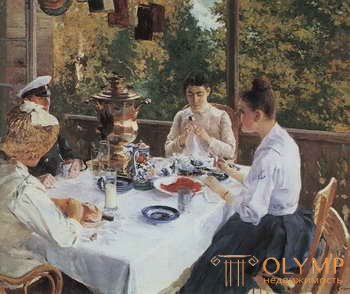 | Impressionism - (from the Fr. Impression - impression) direction in the art of the last third of the XIX - beginning of the XX century, which arose in France. The name was introduced by art critic L. Leroy, who disparagedly responded to the exhibition of artists of 1874, where, among others, the painting by K. Monet “Sunrise. Impression". Impressionism claimed the beauty of the real world, emphasizing the freshness of the first impression, the variability of the surrounding. Preemptive attention to solving purely painterly tasks reduced the traditional view of drawing as the main component of a work of art. Impressionism had a powerful impact on the art of European countries and the United States, awakened interest in subjects from real life. (E. E., E. Degas, O. Renoir, C. Monet, A. Sisley, and others.) |
 | Pointillism - the flow in painting (synonym - divisionism), which developed in the framework of neo-impressionism. Neo-impressionism appeared in France in 1885 and became widespread also in Belgium and Italy. Neoimpressionists tried to apply the latest achievements in the field of optics in art, according to which painting in visual perception, performed by separate points of primary colors, gives a fusion of colors and the whole range of painting. (J. Seurat, P. Signac, C. Pissarro). |
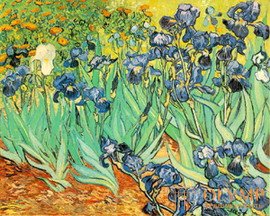 | Post-impressionism - conditional collective name of the main directions of French painting to. XIX - 1st of Thursday. XX century. The art of post-impressionism arose as a reaction to impressionism, which fixed attention on the transfer of the moment, on the sensation of picturesqueness and lost interest in the form of objects. Among the post-impressionists are P. Cezanne, P. Gauguin, V. Gog, and others. |
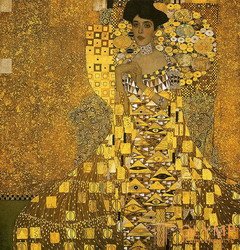 | Modern - style in the European and American tactics on the eve of the XIX - XX centuries. Moderne reconsidered and styled the traits of the indi- vidual counterparts, and developed the manufacturing facilities, based on the principles of the technical principles, based on the principles of the psychodynamics; The object of styling the model is also becoming and natural farms. This obyacnyaetcya ne tolko intepec to pactitelnym opnamentam in ppoizvedeniyax modepna, Nr and cama THEIR kompozitsionnaya and placticheckaya ctpyktypa - obilie kpivolineynyx ocheptany, oplyvayuschix, nepovnyx kontypov, napominayuschix pactitelnye fopmy. It is connected with the model - the symbolism, which has an architectural-philosophical basis for the model, based on the model as a means for the development of its own ideas. Modern had different names in different countries, which in essence are synonymous: Art Nouveau in France, Secession in Austria, Art Nouveau in Germany, Liberty in Italy. |
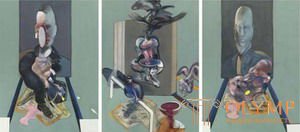 | Modernism - (from the French. Modern - modern) is the general name for a number of areas of art from the first half of the 20th century, characterized by the negation of traditional forms and aesthetics of the past. Modernism is close to avant-garde and opposite to academicism. |
 | Avant - gardism is the name that unites the circle of artistic trends prevalent in the 1905-1930s. (Fauvism, Cubism, Futurism, Expressionism, Dadaism, Surrealism). All these areas are united by the desire to renew the language of art, to rethink its tasks, to find freedom of artistic expression. |
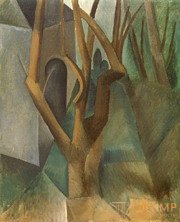 | Cezanneism - the direction in art to. XIX - n. XX century., Based on the creative lessons of the French artist Paul Cezanne, who reduced all the forms in the image to the simplest geometric shapes, and the coloring - to contrasting constructions of warm and cold tones. Cezannism served as one of the starting points for cubism. To a large extent, Sezannism also influenced the national realistic school of painting. |
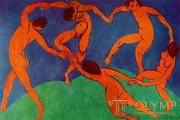 | Fauvism - (from fauve - wild) avant-garde current in French art n. XX century. The name “wild” was given by contemporary critics to a group of artists who performed in 1905. At the Paris Salon of Independents, it was ironic. The group consisted of A. Matisse, A. Marquet, J. Rouault, M. de Vlaminck, A. Derain, R. Dufy, J. Braque, C. van Dongen, and others. The Fauvists brought together laconic forms of expression and intense color solutions. , search for impulses in primitive creativity, the art of the Middle Ages and the East. |
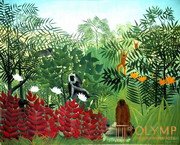 | Primitivism is the deliberate simplification of graphic means, imitation of the primitive stages of the development of art. This term refers to the so-called. the naive art of artists who have not received a special education, but who are involved in the general artistic process to. XIX - beginning. XX century. The works of these artists - N. Pirosmani, A. Rousseau, V. Selivanova and others have a peculiar childishness in the interpretation of nature, a combination of a generalized form and small literalness in details. Primitivism of the form does not predetermine the primitiveness of the content. It often serves as a source for professionals, borrowing from popular, in fact primitive art forms, images, methods. Primitivism drew inspiration from N. Goncharov, M. Larionov, P. Picasso, A. Matisse. |
 | Academism - the direction in art, established on the basis of following the canons of antiquity and the Renaissance. Existed in many European schools of art from the XVI to XIX century. Academism transformed classical traditions into a system of “eternal” rules and regulations that hampered creative searches, and tried to oppose “high” improved, perfected, non-rational and timeless forms of beauty to imperfect living nature. Academism is characterized by a preference for plots from ancient mythology, biblical or historical themes to plots from the contemporary artist of life. |
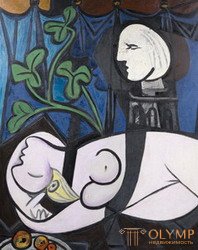 | Cubism - (French. Cubisme, from cube - cyb) directed in the first century of the XX century. The plastic language of kibism is based on the deflection and decomposition of the subjects on the geometry, the plastic shift of the form. Cubism was born in 1907-1908 - the eve of the First World War. The undisputed leader of this trend was the poet and publicist G. Apolliner. This current was one of the first to embody the leading trends in the further development of the art of the 20th century. One of these trends was the dominance of the concept over the artistic intrinsic value of the painting. The fathers of Cubism consider J. Brac and P. Picasso. Fernand Leger, Robert Delaunay, Juan Gris and others joined the emerging trend. |
 | Surrealism is a trend in literature, painting and cinema, which arose in 1924 in France. It greatly contributed to the formation of the consciousness of modern man. The main figures of the movement are Andre Breton, Louis Aragon, Salvador Dali, Luis Bunuel, Juan Miro and many other artists from all over the world. Surrealism expressed the idea of existence beyond the real, the absurdity, the unconscious, dreams, dreams acquire an especially important role here. One of the characteristic methods of the surrealist painter is the removal from conscious creativity, which makes him an instrument, in various ways, extracting bizarre images of the subconscious mind related to hallucinations. Surrealism survived several crises, survived the Second World War, and gradually, merging with mass culture, crossing with the trans-avant-garde, entered as part of postmodernism. |
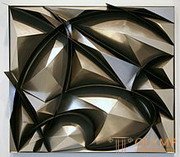 | Futurism - (from Late. Futurum - the most advanced) literary-extrusion flow in the art of 1910-x years. Otvodya cebe pol ppoobpaza ickycctva bydyschego, fytypizm in kachectve ocnovnoy ppogpammy vydvigal ideyu pazpysheniya kyltypnyx ctepeotipov and ppedlagal vzamen apologiyu texniki and ypbanizma HOW glavnyx ppiznakov nactoyaschego and gpyadyschego. The main reason for the archetypal improvement of the technology is the search for a practical expression of the rate of movement as a result of the rate of improvement of the life cycle. The Russian version of the physics was strong, the name of cybryticism and was based on the combination of plastic principles of French cybicism and European standards and of its own development. |
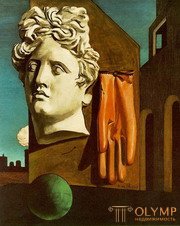 | Metaphysical painting - (from Greek. Meta - after and phisika - nature, metaphysics - the science of spiritual phenomena inaccessible to experimental knowledge, the transcendent principles of the world) - a trend in Italian art, which arose in 1916 in Ferrara. Its creators were painters Giorgio De Chirico, Carlo Carr, Giorgio Morandi. Subsequently, Morandi and Carr changed their style and the only leader was de Chirico, in whose paintings the geometrization and stiffness of forms symbolized “eternity, the metaphysics of time and space,” irrational connections between outwardly unrelated objects. Metaphysical art is not widely spread, but had a great influence on other artists. It was close to symbolism and became the forerunner of another powerful artistic movement - surrealism. The term "metaphysical art" can be used in a wider sense as a synonym for the irrational, illogical, mysterious. |
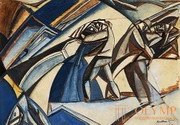 | Vorticism - the direction of the English avant-garde, founded by Wyndham Lewis in 1914. This name owes its origin to the remark of the Italian futurist Umberto Boccioni that any work is born out of a whirlwind of feelings (in Italian, vortizto is a whirlwind). Like futurism, vorticism - a sharp, angular and very dynamic style that spread in both painting and sculpture - sought to convey the process of movement. Although Vorticism did not live even before the end of the First World War, he played an important role as a stage in the process of the formation of abstract art in England. (Bomberg, Lewis). |
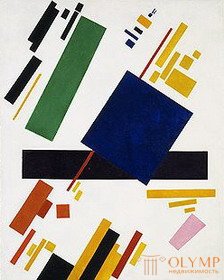 | Abstractionism - (Latin abstractio - removal, distraction) - the direction of non-figurative art, abandoned the image of forms in painting and sculpture that is close to reality. One of the goals of abstractionism is to achieve “harmonization”, the creation of certain color combinations and geometric shapes in order to evoke a variety of associations in the beholder. The extreme manifestation of modernism. |
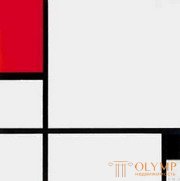 | Neoplasticism is one of the earliest forms of abstract art. Created by 1917 by the Dutch painter P. Mondrian and other artists who were part of the association "Style". Neoplasticism is characterized, according to its creators, by the pursuit of “universal harmony”, expressed in strictly balanced combinations of large rectangular shapes, clearly separated by perpendicular black lines and colored in the local colors of the main spectrum (with the addition of white and gray tones). |
 | Expressionism - (from the French expression - expressiveness) is a modernist trend in Western European art, mainly in Germany, in the first third of the 20th century, formed during a certain historical period on the threshold of the First World War. The ideological basis of expressionism was an individualistic protest against the ugly world, the increasing alienation of man from the world, a feeling of homelessness, ruin, disintegration of those principles on which European culture seemed to rest so firmly. Expressionists tend to mysticism and pessimism. Artistic techniques characteristic of expressionism: the rejection of the illusory space, the desire for a planar interpretation of objects, the deformation of objects, the love of sharp colorful dissonance, a special flavor that contains apocalyptic drama. Artists perceived creativity as a way of expressing emotions. |
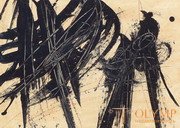 | Tashizm - a new wave of abstract expressionism (from fr. Tache - spot), developed in Europe and the United States in the early 1950s. H. Hartung, M. Rothko, J. Pollock, W. de Kooning, M. Toby were representatives of the tashism in America. Another name for this movement is “Painting of Action”. For this pictorial method is characterized by dynamism, spontaneity, methods of pouring and splashing paint, reflecting the "motor" of the creative act of the artist. Close to actionism. |
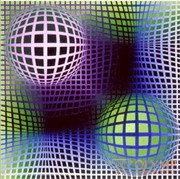 | Op-art - (eng. Op art, abbreviated from optical art - optical art) is a trend in the art of the 20th century that became widespread in the 1960s. The artists of op-art used various visual illusions based on the perception of flat and spatial figures. The effects of spatial movement, merging, soaring forms were achieved by the introduction of rhythmic repetitions, sharp color and tonal contrasts, the intersection of spiral and lattice configurations, wriggling lines. In op-art often used installation of changing light, dynamic design. The line continues the technicalist line of modernism. The most prominent representative of this direction is Victor Vazarelli. |
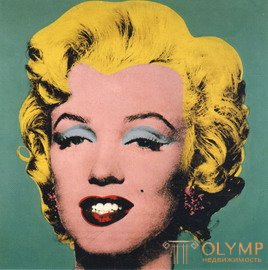 | Pop art - (from the English. Pop-art - art movement, which in the 1950s-60s covered many types of visual art in the USA and other countries. Representatives - E. Warhol, C. Oldenburg, R. Liechtenstein and others. The name gave English art historian Lawrence Olloway in connection with English painting of the 60s, then Rauschenberg’s “combined paintings”, performances and installations by American artists, who often turned to alternative forms of art using high-tech capabilities, were included in the field of pop art. |
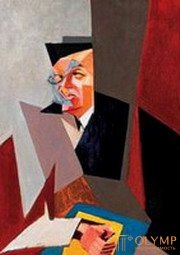 | Dadaism - the modernist trend, which has become the quintessence of the principle of destruction of imagery. According to George Gross, the Dadaists were the embodiment of pure nihilism, destroying the imagery “for the sake of the great Nothing.” The emergence of the Dadaist group in 1916 was associated with the opening of the artistic club - “Cabaret Voltaire” in Zurich. What does the term "Dada" means no one knows. Here is what one of the brightest representatives of Dadaism and its ideological leader Tristan Tzara in the manifesto of 1913 wrote about this name: “Dada is the tail of the sacred cow of the Crewe tribe, in some regions of Italy this is the mother’s name, and this reproduction of infant babble. In any case, something completely meaningless, which henceforth has become the most successful name for the whole flow. ” The main representatives are: Tristan Tzara, Marcel Duchamp, Francis Picabio, Jean Hans Arp. |
 | Minimalism originated in the US in the lane. floor. 60s. Its origins are constructivism, supremacism, dadaism, abstractionism, pop art. The immediate predecessor of minimalism is the American artist F. Stella, who presented in 1959-60. “Black Paintings” series, where ordered straight lines prevailed. The term belongs to R. Walheim, who introduces it as applied to the analysis of the works of M. Duchamp and pop artists, minimizing the artist’s interference with the environment. |
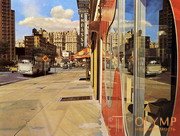 | Hyperrealism - (hyperrealism - English), or photorealism (photorealism - English) - artistic movement in painting and sculpture, based on photographic reproduction of reality. In both its practice and aesthetic orientations to naturalism and pragmatism, hyperrealism is close to pop art. They are primarily united by a return to figurativeness. It serves as the antithesis of conceptualism, which not only broke with representation, but also called into question the very principle of the material realization of an artistic concept. |
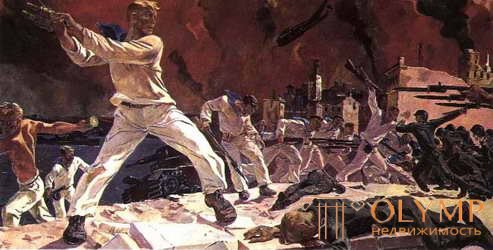 | Social Realism - the ideological trend of the official art of the USSR in 1934-1991. For the first time the term appeared after the Decree of the Central Committee of the CPSU (b) of April 23, 1932 "On the restructuring of literary and artistic organizations", which meant the actual elimination of certain artistic trends, trends, associations and groups. The unified creative method that Soviet writers and artists should have been guided by was most fully designed, from the scientific, i.e. from party positions reflect socialist reality. |
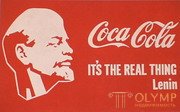 | Conceptualism is the leading direction in the art of the 60-70s, in which the concept underlying the work turns out to be more important than artistic realization; Conceptualism considers the artist as a generator of ideas, not the creator of things. The idea borrowed from philosophy, psychoanalysis, politics, finally, life itself, can be implemented by any means, including with the help of texts, videos, performances, objects. The work can be exhibited in the gallery or created “on the ground” (site-specific art), when the landscape itself becomes an integral part of the work. Representatives - Joseph Kosuth, Dan Graham. Works of conceptualism often represent only gestures or projects, indicating only the possibility of the emergence of art. The aimless game is an important component of conceptual art. Such a game simply activates life itself, confirms human existence, because “art as an idea” arises and exists only as a product of human life. The Moscow trend of conceptualism was most consistently realized in the works of I. Kabakov, R. and V. Gerlovins, A. Monastyrsky, TOTART and the group "Collective Actions" (CD). |
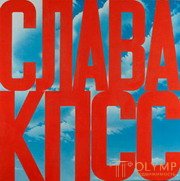 | Sots Art is a trend in the domestic unofficial art of the 1970s - early 1990s. The artists of Sots Art used for their works stylistics, language and the conquests of social realism. However, as a rule, in the works of socialist artists there are humor, irony and sarcastic attitude towards ideological propaganda clichés, which are abundantly dissolved in the mass consciousness of Soviet people. Combining pseudo-seriousness and style, taken from social realism, with a humorous or absurd plot, in their works, social artists sought not only the audience smile, but also the destruction of socialist mythology. The artists of this genre traditionally include: V. Komar and A. Melamid, A. Kosolapov, G. Bruskin and others. |
 | Kinetic art - (from the Greek. Kineticos - “setting in motion”) - the flow in modern art associated with the wide use of moving objects, which is based on the idea of form movement. Under the dynamics of an object we mean not just its physical movement, but any change in it, a transformation, in short, any form of the “life” of a work while the viewer contemplates it. |
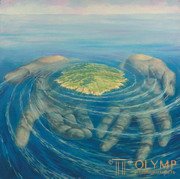 | Metarealism - a trend that arose initially in Russian poetry to the 70s - early 90s. XX century., Focused on overcoming the realism of socio-empirical reality. In contrast to the artists who reinforce the outer, illusionist layer of reality, the meta-realists hypertrophy the visible surface of things, exposing their metaphysical depth. Metarealism is the realism of not one, visible, but many realities, visualization of the invisible parts of the universe, and attempts to bring them together to create an image of a comprehensive reality. |
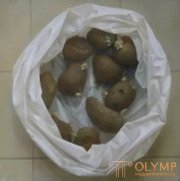 | Superrealism - other names hyperrealism, magical realism, photorealism, radical realism. Extremely naturalistic for a wider artistic direction of neorealism. |
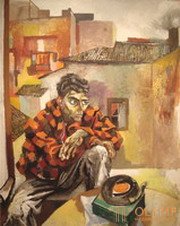 | Neorealism is an artistic trend that developed in the visual arts in the middle of the 20th century in a number of European countries and in the USA, whose representatives, against the background of modernist art, proclaimed a return to the realistic values of traditional pictorial forms. |
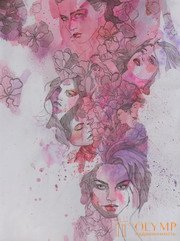 | Fantasy (fantasy) (English phantasy letters - fantasy), a genre of literature and art, adjacent to science fiction, but in a freer, “fabulous” manner using the motives of long-distance movements in space and time, alien worlds, artificial organisms, the mythology of ancient civilizations. In art, fantasy elements are often combined with abstractionism, surrealism, or transformed into fantastic realism. Close to surrealism, but unlike the latter strictly adheres to the principles of the traditional easel image "in the spirit of the old masters"; rather, it may be considered a late version of symbolism. Among the characteristic examples is the work of V. Tubke or the masters of the “Vienna school of fantastic realism” (R. Hausner, E. Fuchs, and others). |
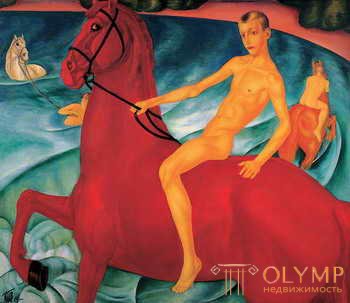 | Postmodernism is an artistic and cultural ideology of the second half of the twentieth century, focused on the correction of the ideology of modernism in the new historical conditions. Awareness of the need for this came after World War II, with the understanding that modernism with its characteristic social, political, aesthetic utopias is in some way connected with totalitarianism and violence. In architecture, the explosion in the USA is considered to be one of the classic monuments of modernism architecture, the residential quarter embodying the ideas of social equality, progress and purity of modern aesthetics, but ignoring the concept of comfort and humanity and therefore requiring restructuring. Postmodernism sees its task in mitigating modernist rigorism by allowing eclecticism, historical quotes and elements of popular culture into art; he criticizes the modernist requirement of originality and, based on the fact that at the end of the twentieth century - early. XXI centuries. the creation of something new is impossible, operates with the method of quoting, intertextuality (references and hints) and appropriation (appropriation of foreign languages and images). The ambitions of "creativity" are replaced by the concept of "game." Now it is more correct to speak not about the style and not about the direction of postmodernism, but about the postmodern problematics with which the artists continue to work. |
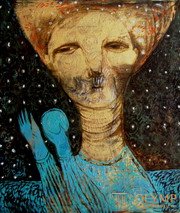 | Transavangard - the course of postmodern painting, whose aesthetic credo lies in opposing the conceptualism of new picturesqueness, figurativeness, expressiveness, a pronounced personal beginning; installation on aesthetic pleasure, a free combination of artistic styles of the past. Another motive reflected in the name of the flow is the confrontation to the crisis of a “transitional society” (societe de transition) through the development of a transitory nomadic artistic mentality of an international character. The term was introduced in 1979 by Italian art critic A. Bonito Oliva in an article devoted to the work of five Italian artists - S. Chia, F. Clemente, U. Cucci, N. de Maria, M. Paladino. In 1982, in his work The International Transavangard, co-written with leading European and American art critics, Bonito Oliva unites German neo-expressionism, Argentinean new imagery, French free figurative art under this name. In the same year, an exhibition is held in Berlin, representing a number of artists as trans-avant-gardists, united by a desire to “reactivate” the artistic styles of the past and, in particular, regional, national artistic traditions. |
Recently, the term “visual art” has been gradually supplanted by the concept of “visual art”, which includes, along with painting, graphics, sculpture, decorative and applied art, and artistic photography, computer graphics, video art, installations, performances, environmental and so on. d. There are new directions and styles at the junction of different types of art and new technologies.
Что бы оставить комментарий войдите
Комментарии (0)